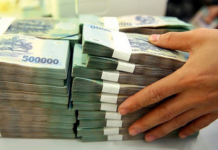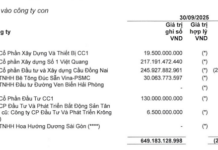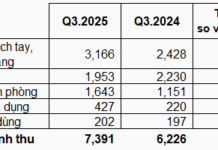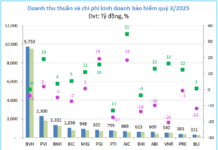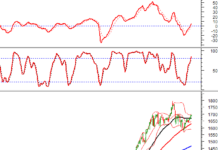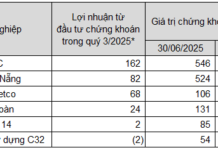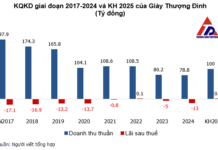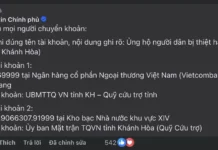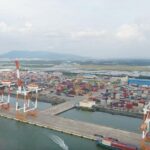The Ministry of Defense has organized a conference to transfer the entire Tan Cang Sai Gon Corporation, which was under the Navy, to the management of the Ministry of Defense.
Tan Cang Sai Gon is currently managing and operating eight container ports (including three of the most modern and largest container ports in Vietnam), accounting for 55% of the country’s import and export container market share. It is ranked 18th among the top 20 container port groups with the largest cargo volume in the world.
Earlier, on May 30, 2025, the Ministry of Defense issued Decision No. 2386 to establish the Sea Economic Brigade (Brigade 20) under the Ministry of Defense, based on the Saigon Port – Tan Cang Sai Gon Corporation.

At the conference, Colonel Nguyen Thinh Tiep, Deputy Chief of Staff of the Navy, reported on the draft minutes of the transfer of the entire Tan Cang Sai Gon Corporation from the Navy to the Ministry of Defense.
After the transfer, the Brigade is required to perform well in its advisory and proposing functions to the Central Military Commission and the Ministry of Defense. It should also quickly stabilize its organizational structure, complete the Party organization, command organization, and mass organizations, and constantly care for and improve the material and spiritual life of officers and workers in the unit.
The Brigade should focus on its leadership and directive roles and successfully fulfill its mission as a labor-producing army. It should also aim to “Connect the flow of goods, develop the maritime economy, enhance the National Brand, and contribute to national construction and defense.”
By accelerating investment and expanding its scale, the Corporation aims to operate effectively, uphold the law, preserve and develop capital, and aspire to become a leading group in the country’s maritime economic field.
Notably, the Brigade is required to pay attention to bold and pioneering investments in building “green ports” and “automated/smart ports.” It strives to commence construction on Vietnam’s first semi-automatic port in Lach Huyen, Hai Phong, in the first half of 2026. Additionally, it aims to develop and transfer the “Tan Cang Sai Gon Digital Seaport” into the foundation for a “National Digital Seaport,” contributing to the digital transformation of the port operation industry, logistics services, and the national digital economy.
Earlier in the day, the Tan Cang Sai Gon Corporation held a conference to transfer the rights and responsibilities of the Chairman of the Tan Cang Sai Gon Corporation Limited Company.
Implementing the decisions of the Minister of Defense, Senior Lieutenant General Vo Minh Luong presided over the transfer of rights and responsibilities between Colonel Nguyen Nang Toan, Deputy Commander of Brigade 20 and Deputy General Director of Tan Cang Sai Gon Corporation (transferor), and Major General Ngo Minh Thuan, Commander of Brigade 20, Chairman and General Director of Tan Cang Sai Gon Corporation (transferee).
“The Chairman of Ho Chi Minh City: “The Success of the City Owes a Great Deal to Tan Cang Cat Lai Port””
On January 28th, Saigon New Port Corporation held a ceremony to kickstart the spring cargo operations at Cat Lai Port. The event was graced by the presence of Chairman of the People’s Committee of Ho Chi Minh City, Phan Van Mai; Lieutenant General Pham Truong Son, Deputy Chief of the General Staff of the Vietnam People’s Army, among other dignitaries.
The Green Port Transition: Sailing Towards Sustainability
Vietnam is lagging behind in the green transition, and there’s a lot of ground to cover. The issue at hand is the need to accelerate this process; otherwise, the country risks missing out on development opportunities and even falling behind as no “green ship” wants to dock at a “non-green port.”










